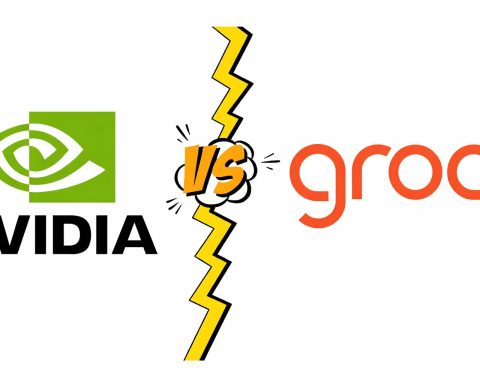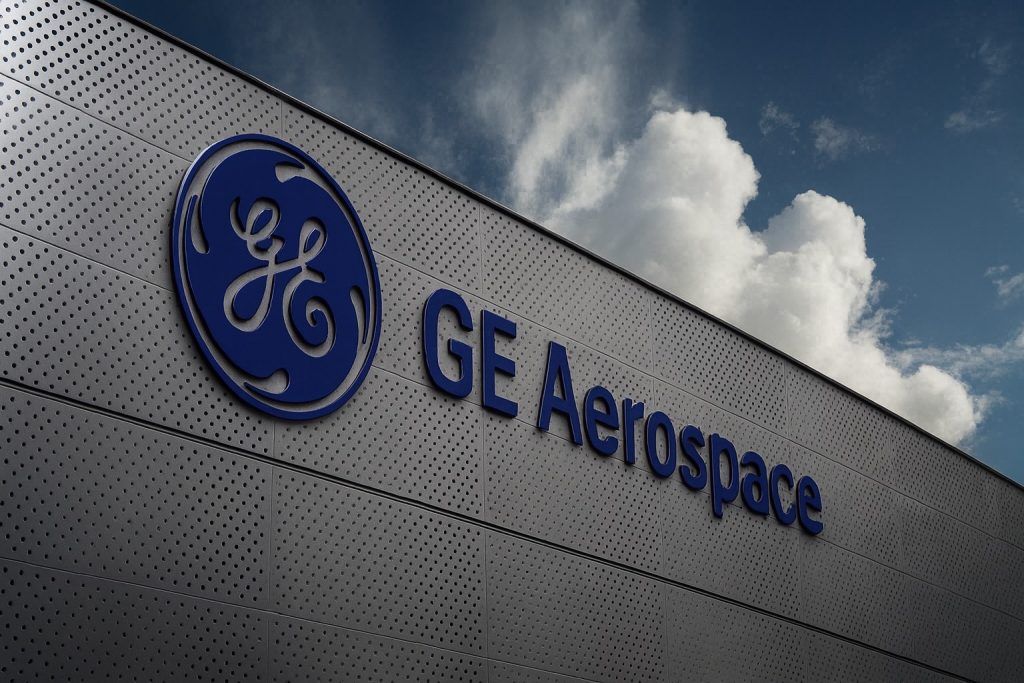- Stock near record highs: Microsoft’s share price hovered around historic peaks in October 2025, closing about $514 by mid-month – just shy of its all-time high (~$555) – and boosting its market cap to roughly $3.8 trillion [1]. The stock is up ~23% year-on-year and ~25% year-to-date, outpacing the broader market amid investor excitement over AI and cloud growth [2].
- Analysts overwhelmingly bullish:32 of 34 Wall Street analysts rate MSFT a “Buy,” with 12-month price targets averaging ~$618 (≈20% above current levels) [3]. Top bulls even see $650–$710 ahead, and Wedbush’s Dan Ives projects Microsoft could hit a $5 trillion valuation as its AI initiatives scale [4].
- AI & cloud mega-investments: Microsoft doubled down on AI infrastructure in October, investing billions to secure computing power. It struck a 5-year, $17.4 billion supercomputer deal with Nebius to access 100k+ Nvidia GPUs [5], and joined a Nvidia/BlackRock-led consortium to acquire Aligned Data Centers for ~$40 billion – one of the largest data-center deals ever [6]. These bets aim to expand capacity for AI workloads worldwide.
- New products and AI features: At Dubai’s GITEX tech expo in mid-October, Microsoft unveiled AI-enhanced Surface “Copilot+” PCs and its first 5G Surface Laptop, showcasing on-device Copilot AI capabilities for business users [7]. It also announced Microsoft 365 Copilot would get 33 petabytes of London Stock Exchange data via a new partnership [8], and launched local Copilot cloud hosting in the UAE to meet regional data needs [9].
- Leadership shifts for AI era: CEO Satya Nadella reorganized Microsoft’s leadership on October 1 to accelerate AI innovation. Longtime exec Judson Althoff was promoted to CEO of the commercial business (overseeing ~75% of revenue), freeing Nadella to focus on “datacenter buildout, systems architecture, AI science, and product innovation” amid what he calls a “tectonic AI platform shift” [10]. Nadella told employees Microsoft must “build the new frontier” in AI while growing its core businesses [11].
- Gaming division bets big: In October, Microsoft’s Xbox unit signaled a pivot to high-end hardware. It launched a $999 handheld “Xbox Ally X” (essentially a mini Windows 11 PC) – the most expensive ‘Xbox’ device ever [12] – and hinted the next-gen Xbox console will be a “very premium”, high-spec machine [13]. Microsoft also hiked console prices (e.g. Xbox Series X to $649) and Game Pass fees, moves that sparked gamer backlash on social media [14] [15]. The company defended the strategy as investing in future consoles (partnering with AMD on custom chips) and focusing on enthusiasts, even as some fans bristled at the higher costs [16] [17].
- Financial momentum and Q1 preview: Microsoft’s financial momentum continued into late 2025. In its last reported quarter (Q4 FY2025), revenue grew 18% (to $76.4 billion) and EPS beat estimates [18]. The Azure cloud unit surged +34% YoY [19]. Microsoft will report FY2026 Q1 earnings on October 29, and analysts expect another strong quarter (~$75.5 billion revenue and $3.65 EPS) [20]. Investors are watching whether Azure’s growth stays hot and how heavy AI investments (CFO Amy Hood signaled record ~$30 billion capex this quarter) might impact margins [21].
- Regulatory and legal updates: Microsoft navigated mixed regulatory news in October. In Europe, regulators accepted Microsoft’s plan to unbundle Teams from Office (separating its video-chat app from the Office suite) to resolve an EU antitrust probe [22]. In the U.S., however, a class-action lawsuit was filed claiming Microsoft’s exclusive partnership with OpenAI is anti-competitive – an allegation Microsoft disputes [23]. Meanwhile, Windows 10 officially reached end-of-life on Oct. 14, 2025, with Microsoft ceasing free security updates for the 4-in-10 Windows users still on Windows 10 [24] (a free one-year Extended Security Update is available to ease the transition) [25].
- Investor sentiment upbeat (with caution): Market sentiment around Microsoft remains strongly positive. Many see Microsoft as a prime winner of the AI revolution: “Microsoft is becoming more of a cloud infrastructure business and a leader in enterprise AI,” observes Gerrit Smit of Stonehage Fleming [26]. The company’s fundamentals earn high marks (robust cash flows, high margins, double-digit growth) [27]. Still, some caution that AI hype has driven valuations very high; any growth stumble or surging costs could trigger a pullback [28]. For now, however, Wall Street’s consensus is that Microsoft’s diversified businesses and execution justify its rich valuation [29] [30]. “The bulls remain fully in charge,” one strategist noted, as cooling interest rates and Fed rate cuts this fall have provided a “notable macro tailwind” for tech stocks like Microsoft [31].
Stock Surge and Market Sentiment in October
October 2025 saw Microsoft’s stock (MSFT) extending its year-long rally and flirting with record highs. By October 17, MSFT shares closed around $513–$514, within striking distance of their all-time peak (~$555) [32]. This puts Microsoft up roughly 23% from a year ago [33] and about 25% higher year-to-date [34], handily outperforming the broader indices. The stock’s climb has added hundreds of billions to Microsoft’s market capitalization, now just under the $4 trillion milestone [35] [36]. Investors have been encouraged by Microsoft’s resilient growth and AI leadership, treating the company as a cornerstone of the current tech boom.
Investor sentiment remained broadly optimistic throughout the month. Even after a brief late-summer dip, MSFT found support around the $500–$510 level in early October, and consistently ground higher [37]. Traders noted that ~$510 acted as a price floor during October, while ~$520 was a near-term resistance level [38]. Indeed, Microsoft briefly touched ~$524 around Oct. 22 [39]. Many market technicians saw the stock’s chart as constructive, with a series of higher lows and solid momentum indicators (e.g. RSI in the mid-50s, not overbought) [40]. This suggested the rally was “not looking stretched” and could have “some gas left in the tank” if upcoming news (like earnings) proved favorable [41].
Macro factors provided an additional tailwind. In early October, the S&P 500 and Nasdaq hit new highs amid cooling inflation and signals of interest-rate cuts by the U.S. Federal Reserve [42]. After a prolonged period of rate hikes, the Fed’s pivot to an easing stance improved valuations for growth stocks. Lower rates make future earnings more valuable, which buoyed high-P/E tech giants like Microsoft [43]. As one strategist put it, “The bulls remain fully in charge,” thanks in part to a dovish Fed that has lifted enthusiasm for big tech [44]. This supportive backdrop helped Microsoft shares weather any minor dips during the month.
Overall, Microsoft’s market performance in October reflected a confident outlook. The stock’s strong uptrend and the broader risk-on mood have investors betting Microsoft will finish 2025 on a high note. Of course, much depends on upcoming catalysts (like its earnings report), but so far sentiment has been largely positive – with many willing to “buy on dips” given Microsoft’s robust fundamentals [45] [46].
Big Bets on AI and Cloud Infrastructure
A major theme for Microsoft in October 2025 was its aggressive investment in artificial intelligence (AI) and cloud infrastructure. The company made headlines with several big-ticket deals aimed at securing the computing capacity and partnerships needed to maintain its AI lead:
- Nebius Supercomputer Deal: In late September (spilling into October news), Microsoft inked a 5-year, $17.4 billion contract with Nebius – a rising AI cloud provider – to access over 100,000 Nvidia GPUs for AI workloads [47]. This eye-popping partnership underscores how serious Microsoft is about obtaining scarce AI hardware. The deal can even expand to $19.4 billion over time [48], illustrating Microsoft’s willingness to spend big to overcome the industry-wide shortage of AI chips. Analysts noted this “validates Nebius’s tech” and gives Microsoft a valuable ally to meet insatiable AI demand [49]. Essentially, even Microsoft’s Azure – with its massive data centers – is outsourcing some AI capacity to ensure it isn’t bottlenecked by GPU supply [50].
- $40 Billion Data Center Acquisition: In mid-October, an investor group including Microsoft, Nvidia, and BlackRock announced a $40 billion deal to buy Aligned Data Centers [51]. Aligned operates ~80 data centers across the U.S. and Latin America, and this blockbuster buyout (one of the largest ever in that industry) is aimed at securing coveted server space for the AI era [52]. “With this investment in Aligned…we further our goal of delivering the infrastructure necessary to power the future of AI,” said BlackRock CEO Larry Fink, whose fund led the consortium [53]. The deal is the first major transaction under the new AI Infrastructure Partnership (which counts Microsoft, Nvidia, MGX, and even Elon Musk’s xAI among backers) [54]. It highlights a broader trend: tech giants are racing to lock in data center capacity and power as AI adoption soars. Microsoft’s involvement shows it is willing to literally buy the cloud infrastructure needed to keep expanding Azure and AI services. The company has already outlined plans to spend a staggering $80 billion on AI data centers globally over the next several years (about half in the U.S.) [55]. In October, Azure also unveiled new supercomputer clusters using Nvidia’s latest “Blackwell” GPUs, indicating Microsoft is deploying cutting-edge hardware at scale to stay ahead [56].
- Strategic AI Partnerships: Microsoft continued to forge alliances to bolster its AI and cloud ecosystem. One high-profile partnership came to fruition with the London Stock Exchange Group (LSEG). In October, Microsoft announced an expanded alliance wherein LSEG’s vast trove of financial market data (33+ petabytes) will be integrated into Microsoft’s AI Copilot platform [57]. This means Copilot (Microsoft’s GPT-powered assistant across Office apps, Azure, etc.) can leverage rich financial data to assist bankers, investors, and analysts with real-time insights [58]. Microsoft had earlier taken a stake in LSEG, and now it’s delivering on plans to embed cloud-based data and analytics into finance workflows – strengthening Azure’s appeal in the financial services sector [59]. Another deal in early October saw fintech firm Checkout.com partner with Microsoft to embed Azure’s AI tools into digital payment and e-commerce platforms [60]. And on the consumer side, Microsoft’s $69 billion acquisition of Activision Blizzard (completed in 2023) began paying dividends: the Xbox team noted it had 50+ million Game Pass subscribers as of FY2025 and plans to bring popular Activision game franchises into Game Pass to drive further growth [61].
These AI and cloud initiatives are a big reason Microsoft’s stock rally has been so strong. By spending heavily now on chips, data centers, and data partnerships, Microsoft aims to entrench itself as the go-to platform for AI. CEO Satya Nadella has been vocal that we’re in the early stages of a “tectonic” shift in computing [62] – akin to the dawn of the internet or mobile eras – and Microsoft intends to be at the forefront. As a result, the company is accepting short-term costs (massive capital expenditures, lower margins) in order to capture long-term opportunity. Microsoft’s CFO Amy Hood cautioned that capex is soaring to record levels (nearly $30 billion for the coming quarter) to build out AI supercomputing capacity [63]. This could “pinch” near-term profits [64], but Microsoft emphasizes the investment is necessary to meet booming cloud demand and will pay off over time [65]. One analyst noted Microsoft “remains resilient” with diverse businesses that can buffer the huge AI spend while positioning for long-term growth [66].
Notably, competition in the AI cloud arena is heating up alongside Microsoft’s moves. Microsoft’s closest AI partner, OpenAI (creator of ChatGPT), has been spreading its wings to other clouds. In fact, OpenAI reportedly agreed to spend ~$300 billion over 5 years on Oracle’s cloud infrastructure [67] – a jaw-dropping deal that grabbed headlines and signaled that even OpenAI doesn’t want to rely on a single provider. (If accurate, $300B would be one of the biggest cloud contracts ever, reflecting OpenAI’s immense compute needs.) Additionally, OpenAI executives have privately expressed frustration that Microsoft “isn’t moving fast enough” in adding AI server capacity, prompting OpenAI to also use alternative clouds like Oracle and possibly build its own data centers [68]. By 2030, OpenAI’s agreement with Microsoft will drop to sharing only 8% of OpenAI’s revenue (down from 20% today), indicating the startup plans to reduce dependence on Microsoft as it grows [69]. Microsoft still has a strong partnership and hefty equity stake in OpenAI, but these developments show that even allies can become more self-reliant in the quest for AI supremacy [70].
Meanwhile, other cloud rivals are investing aggressively too. Google and Amazon continue to pour billions into AI for their clouds, and Oracle Corp. has emerged as a surprising contender. Oracle’s cloud unit has surged in 2025 thanks to AI contracts (its stock was up ~70% YTD by early October) [71], and Oracle used its own October AI conference to boast of huge backlogs and new AI features [72] [73]. Microsoft even found itself collaborating with Oracle in some areas: at Oracle’s event, the companies announced a blueprint to integrate Microsoft Azure’s AI/IoT services with Oracle’s cloud apps for supply chain management [74], showing that multi-cloud partnerships are also forming. Despite all this competition, Microsoft’s Azure is holding its lead – it grew ~39% in the latest quarter, faster than Amazon’s AWS (~17%) or Google Cloud (~32%) [75] – suggesting Microsoft is actually gaining cloud market share as overall demand expands. Industry analysts widely view Microsoft as one of the primary “winners” of the AI boom, given its end-to-end ecosystem (cloud, software, devices) and willingness to invest at scale. As long as Microsoft executes well and continues innovating, it’s positioned to ride the AI/cloud wave despite the crowded race.
New Products and AI Features Launched
October 2025 was also a showcase for Microsoft’s product innovation, especially in weaving AI into its software and hardware offerings. Several noteworthy product updates and launches occurred during the month:
- AI-Powered Surface Devices: At the GITEX technology expo in Dubai (mid-October), Microsoft introduced a new line of Surface PCs branded “Copilot+”, along with its first 5G-enabled Surface Laptop [76]. These devices are significant because they come with Microsoft’s Copilot AI assistant deeply integrated into the user experience. The Copilot+ PCs feature on-device AI processing capabilities – likely leveraging specialized chips – to enable smarter productivity features even without constant cloud connectivity. Microsoft pitched these high-end Surfaces as tools to “bring on-device AI capabilities to businesses” [77], highlighting scenarios like real-time language translation, intelligent office apps, and advanced security powered by local AI. The inclusion of 5G in the Surface Laptop also underscores Microsoft’s push for always-connected, AI-rich computing. These launches show Microsoft using its hardware lineup to demonstrate the power of its AI software, in turn driving adoption of Windows 11 and Microsoft 365 services.
- Microsoft 365 Copilot Expansion: Microsoft’s flagship new AI feature, Microsoft 365 Copilot, got several boosts in October. In addition to the LSEG financial data partnership noted earlier (bringing a mountain of market data into Copilot’s knowledge base [78]), Microsoft announced that it will offer localized cloud hosting for M365 Copilot in the UAE [79]. This move allows customers in the Middle East to use AI assistants while keeping data residency local, which is crucial for regulatory compliance and customer trust in that region. It exemplifies Microsoft’s global approach – rolling out AI services but tailoring them to sovereign cloud requirements of different countries. Microsoft also continued to refine Copilot’s capabilities across Office apps, Windows, and Teams during the month, responding to early user feedback since the product’s general release (Copilot began rolling out to enterprise customers in late 2024). By embedding AI “copilots” into everything from Word and Excel to Dynamics 365, Microsoft is aiming to entrench AI features as a core selling point of its software suite.
- Windows 10 End-of-Life and Windows 11 Uptake: A major milestone on the software side was the official end of support for Windows 10 on October 14, 2025. As of that date, Microsoft no longer provides standard free updates or security patches for Windows 10 [80], pushing users to upgrade to Windows 11 (released in 2021) or risk running an unsecured system. This is a significant transition: as recently as September, an estimated 40% of Windows users worldwide were still on Windows 10 [81]. Microsoft has been urging upgrades, touting Windows 11’s improved security and AI features. To soften the blow, the company is offering a one-year free Extended Security Update (ESU) program for Windows 10 users who sign in with a Microsoft account, which will keep their PCs protected until October 2026 [82]. (After that, extended support will require a fee or reward points [83].) Consumer advocates in Europe had pressured Microsoft on this issue, and the free ESU extension is a win for those concerned about software obsolescence. For Microsoft, moving past Windows 10 allows it to focus on Windows 11 (and beyond – Windows “12” is rumored in development) where it can integrate AI more deeply into the OS. Indeed, Windows 11’s latest updates include the Windows Copilot assistant and other AI-driven features. Sunsetting Windows 10 is both a logistical challenge and an opportunity for Microsoft to drive adoption of its latest ecosystem, which could in turn spur more Microsoft 365 subscriptions and hardware refreshes.
- Other Product Updates: In the Azure cloud, Microsoft announced new AI services and tools throughout October – for example, enhancements to Azure OpenAI Service (offering businesses access to GPT-4 and other models), and previews of industry-specific AI solutions (like Azure AI tools for healthcare analytics, and Copilot for Cloud Networking). The company also continued integrating AI into developer tools – GitHub Copilot (owned by Microsoft) gained new capabilities in October, and Azure’s devops suites got AI-powered security scanning. Additionally, Microsoft’s LinkedIn subsidiary rolled out AI features for recruiters and sales professionals during the month, leveraging OpenAI models to automate tasks like writing outreach messages. These incremental updates reinforce how ubiquitous AI has become across Microsoft’s product portfolio in 2025.
In summary, October saw Microsoft blending AI into both new and existing products at an accelerated pace. From high-end laptops to cloud software, the message was consistent: Microsoft is infusing AI to add value and differentiate its offerings. This not only keeps customers locked into Microsoft’s platforms, but also supports its narrative to investors that AI will drive the next leg of growth across Windows, Office, Azure, and beyond.
Leadership Moves and Strategic Focus
The month brought a significant leadership change inside Microsoft, underscoring the company’s all-in commitment to AI. On October 1, Satya Nadella executed a reorganization of his top ranks that elevated Judson Althoff to a critical new role. Althoff, formerly Microsoft’s chief of worldwide commercial business (essentially head of sales and partner organization), was promoted to CEO of Microsoft’s commercial business – giving him oversight of the vast enterprise segment that accounts for roughly three-quarters of Microsoft’s revenue [84]. This move effectively makes Althoff the second-most powerful figure at Microsoft’s helm and frees up Satya Nadella to devote more time to technology and product strategy.
Nadella explained the rationale in stark terms. “We are in the midst of a tectonic AI platform shift,” he told employees, one that demands Microsoft simultaneously nurture its core franchises and invent new categories [85]. To do this, Nadella is stepping back from day-to-day administration of the sales/business side (now Althoff’s domain) and stepping toward Microsoft’s technical frontier – focusing on cloud infrastructure, AI R&D, and future product development [86]. He described his priority as building “the new frontier” of AI platforms while others keep the core business humming [87]. In practice, Nadella is now spending more time on things like data center design, chip procurement, and AI model innovation, reflecting how crucial these are to Microsoft’s future [88]. The reorg also aimed to tighten feedback loops between customers and engineering: by unifying all commercial sales and operations under Althoff, Microsoft hopes to better align product development with client needs in this fast-moving AI race [89].
Industry watchers took note of this “tectonic” shift in leadership focus. Some saw it as Nadella effectively naming a COO or heir-apparent in Althoff, freeing the CEO to become “chief innovator” for a while [90] [91]. Others pointed out that this mirrors how tech founders act during pivotal moments – Nadella, though not Microsoft’s founder, is behaving like a visionary who wants to personally steer the company through a platform paradigm change [92]. It’s a strong signal that AI is now at the heart of Microsoft’s identity and strategy. The company doesn’t want bureaucracy to slow its response to the AI opportunity or threat. By all accounts, Althoff is highly capable of running the commercial side (he’s been with Microsoft since 2013 and is well-regarded in the enterprise tech community), which lets Nadella obsess over outpacing rivals in AI.
Aside from Nadella’s reorg, there were no major executive departures or scandals in October – a relatively calm month internally compared to some peers. Microsoft’s broader strategy under Nadella remains consistent: invest heavily in cloud and AI, expand through strategic acquisitions/partnerships, and maintain disciplined growth in core businesses like Windows, Office, and gaming. The company’s culture continues to emphasize embracing AI across every division. For example, in October Microsoft’s HR and training departments rolled out new internal programs to upskill employees on AI tools (ensuring its workforce can dogfood Copilot and other AI products effectively). The tone from the top is clear that Microsoft sees this era as a once-in-a-generation chance to reshape markets – and leadership is being realigned accordingly to seize that chance.
Gaming Division Updates and Pricing Backlash
Microsoft’s Xbox gaming division made waves in October with bold hardware moves – but not without some controversy among gamers. Traditionally, the console market is about balancing performance with affordability, yet Microsoft appears to be pivoting Xbox toward a more premium, high-cost strategy in a bid to differentiate and boost revenue per user.
The biggest buzz came from comments by Xbox exec Sarah Bond, who teased that the next-generation Xbox console will be “a very premium, very high-end curated experience.” [93] This statement, made in a late-September interview and picked up in October press, suggested that Microsoft’s next console (expected around 2028 per leaked roadmaps) could be far more expensive and powerful than current models. Media outlets like Tom’s Hardware noted this implies a shift toward top-tier, PC-like hardware in the console – possibly even running a variant of Windows and supporting multiple game stores, blurring the line between console and gaming PC [94] [95]. In short, Microsoft is signaling it may build the Xbox “Series Next” as a no-compromise machine for enthusiasts, rather than aiming for mass-market pricing.
At the same time, Microsoft actually launched new hardware at an unprecedented price point. In early October, it unveiled the ROG Ally Xbox Edition (“Xbox Ally X”), a handheld gaming device developed with Asus. Priced at $999.99 for the top model, the Ally X is essentially a portable Windows 11 gaming PC with Xbox branding [96] [97]. (For context, that’s more than double the cost of a standard Xbox Series X console.) The Ally X features high-end specs – an AMD Ryzen Z2 Extreme chip, 24GB RAM, 1TB SSD, 120Hz display [98] – and runs full Windows with an Xbox-optimized interface. TS2.Tech quipped these are the “most expensive ‘Xbox’ devices ever” and a potential sign of things to come [99]. Microsoft is effectively testing whether gamers will pay ultra-premium prices for cutting-edge hardware that can play Xbox games (along with PC games via Steam, etc.).
The reaction in the gaming community was mixed. Tech reviewers praised the Ally X’s performance and build quality, but many gamers experienced sticker shock. Compared to Valve’s popular Steam Deck (starting around $400), Microsoft’s $600–$1000 handhelds struck some as out of touch [100]. Polls indicated roughly 75% of Xbox fans do not plan to buy these handhelds at current prices [101]. As one industry editor remarked, seeing near-SteamDeck specs in a device costing $600+ “is not a good start for Microsoft” in the handheld space [102]. Microsoft acknowledged the high price, positioning the Ally devices as a “premium experiment” to gauge demand. The big question raised was: if a small Xbox handheld can cost $999, what might a full next-gen Xbox console cost? This fueled debate on forums about whether Microsoft is shifting to target only high-end consumers.
In addition, Microsoft instituted price hikes on its existing Xbox products in early October. On Oct. 3, the company raised U.S. prices for its current consoles: the Xbox Series X jumped to $649.99 (from $499 at launch) and the lower-end Series S went to $399.99 [103]. Microsoft attributed these increases to tariffs/supply costs, but the timing – alongside the expensive new handheld – drew skepticism. The company also rolled out new bundle packages ranging $800–$999 with extra controllers or Game Pass subs included [104]. Furthermore, Microsoft made a controversial change to Xbox Game Pass (its subscription service). In October, it revamped Game Pass tiers and raised the Ultimate plan to $29.99/month (up from ~$19.99) [105]. This 50% price jump sparked a wave of cancellations and complaints. Surveys cited by TS2.Tech indicated about 58% of U.S. subscribers who canceled did so due to the higher cost [106]. Many longtime Xbox users vented on social media, arguing that the value proposition had slipped – especially with first-party Xbox game releases in 2025 being relatively sparse.
The gamer backlash was palpable online. Even a former Xbox executive, Mike Ybarra, weighed in, tweeting that “Console price increases are not tariff issues, they are profit issues,” directly calling out Microsoft’s justification [107]. On Reddit and gaming forums, some users swore they would switch to PC or PlayStation rather than stomach continual price hikes. It didn’t help that Sony also announced a pricey PlayStation 5 Pro at $699 (later $749) around the same time, fueling perception of an industry-wide price creep [108]. But observers noted Sony’s base PS5 is still $499, whereas Microsoft’s base Series X is now $650 – a much more dramatic increase [109]. Nintendo, meanwhile, is taking a different tack by focusing on an upcoming affordable Switch 2, doubling down on gameplay over hardware horsepower [110].
For Microsoft, this “premiumization” strategy for Xbox is a calculated risk. On one hand, selling expensive hardware could drive higher profit margins and showcase Microsoft’s tech prowess (especially with cloud integration – the next Xbox is rumored to be a hybrid cloud/console device due in 2028 [111]). It aligns with Microsoft’s broader push to emphasize Game Pass and cloud streaming, where a high-end console could act as a flagship portal to an ecosystem of games and subscriptions. Microsoft also reaffirmed its long-term partnership with AMD for custom chips in future Xboxes (announced at Tokyo Game Show 2025) [112], indicating that bleeding-edge silicon will be central to its plans. And it’s true that the overall gaming market has segments willing to spend big – witness the success of high-end PC GPUs and the enthusiasm of hardcore gamers.
On the other hand, the backlash shows the risk of alienating cost-conscious gamers. If Xbox becomes seen as a luxury platform, Microsoft could lose some market share to alternatives (PC gaming, or rival consoles that keep entry prices lower). The company likely hopes that a combination of financing plans, lower-end options (the Series S is cheaper, though less powerful), and the sheer appeal of exclusive content will keep the Xbox ecosystem healthy. In any case, October’s developments made one thing clear: Microsoft is not afraid to shake up its console strategy, even if it means short-term blowback. The next year or two – as we see how gamers adapt to the new pricing – will test whether this premium approach boosts Xbox’s fortunes or backfires.
From an investor perspective, these gaming moves are relatively minor in Microsoft’s overall story. Microsoft’s stock largely trades on cloud and enterprise results, not Xbox sales. Indeed, analysts noted that MSFT’s recent gains “are largely tied to its PC/cloud business and AI efforts, not just gaming” [113]. The Xbox unit is only a small fraction of Microsoft’s revenue, and its profits are even smaller (consoles often have slim margins). Thus, while gaming is high-profile PR-wise, Wall Street is more focused on Azure growth and Office 365 subscriptions. As TS2.Tech summarized, Microsoft’s shares “have been buoyant thanks largely to cloud and AI, not gaming.” [114] Still, the gaming strategy shift is a notable part of Microsoft’s broader ecosystem play, and if successful, could modestly contribute to revenue and strengthen the brand’s tech image. If it fails, Microsoft might retrench or adjust pricing – but its core business would remain intact. Investors mostly shrugged at the Xbox news, keeping their eyes on the bigger prize (AI/cloud dominance). As one outlet put it, despite gamer grumblings, “Wall Street remains confident in Microsoft’s long-term story” – the belief is that Azure, AI and enterprise software will drive growth, and gaming is a complementary piece [115] [116].
Financial Outlook and Q1 Earnings Preview
October also brought anticipation for Microsoft’s next financial results and some shareholder-friendly news. Microsoft is scheduled to report its fiscal Q1 2026 earnings on October 29, 2025 (after market close) [117], covering the July–September period. This quarterly report will be a key update on whether the company’s strong performance continued into the fall. Expectations are high: Wall Street consensus calls for about $75.5 billion in revenue and $3.65 earnings per share [118], which would mark solid double-digit growth over the prior year’s Q1. Microsoft itself provided guidance in that range, and analysts widely expect the company to at least meet, if not beat, those numbers.
There are a few reasons for this optimism. Microsoft’s FY2025 (year ended June 2025) was outstanding – revenue was up 15% to $281.7 billion and operating income up 17% [119] [120]. The last quarter of FY2025 (April–June) saw $76.4 billion in sales (+18% YoY) and EPS of $3.65, handily topping estimates [121] [122]. Key growth drivers like Azure cloud (+34% in FY25) and Office 365 (+16% commercial, +21% consumer in Q4) showed remarkable strength [123] [124]. Given that momentum, most analysts believe the July–Sept quarter (Q1 FY26) likely continued the trend of robust growth across Microsoft’s segments. The ongoing AI frenzy likely boosted Azure usage further (Azure’s growth may remain in the high-20s to 30%-plus range), and the general easing of IT budget freezes has probably benefited Microsoft’s software license and services sales.
However, investors will be scrutinizing certain details in the Q1 release. One area is expense and margin outlook: as discussed, Microsoft’s capex is exploding due to AI investments, which could weigh on free cash flow and margins in the short term [125]. Any commentary from CFO Amy Hood on capital spending plans or cloud infrastructure costs will be parsed carefully. Another focus is Azure’s growth trajectory – if Azure’s year-over-year growth is significantly above or below expectations (for example, a drop closer to 25% would raise eyebrows, whereas sustaining ~30%+ would impress), it could move the stock. Additionally, Microsoft’s launch of Microsoft 365 Copilot (priced at $30/user/month for enterprise) in Q4 means Q1 is the first full quarter of that product’s sales; analysts will want to hear how the uptake of paid Copilot subscriptions is going. Strong uptake could indicate a new multi-billion dollar revenue stream in the making.
Beyond Q1, Microsoft’s full-year outlook will be of interest. While the company usually only gives specific guidance one quarter ahead, any qualitative commentary on FY2026 will matter. If management expresses confidence that double-digit revenue growth can continue despite the law of large numbers, that will support the bullish case. Conversely, caution about macroeconomic headwinds or AI costs could temper enthusiasm. It’s worth noting that as of October, the broader economy has been relatively resilient, and tech spending on cloud/AI remains a top priority for many enterprises (often reallocated from other budgets). This dynamic bodes well for Microsoft’s near-term financial performance.
Microsoft also delivered some good news for shareholders in October: the company announced a dividend increase. It boosted its quarterly dividend to $0.91 per share (up from $0.83), roughly a 10% hike [126] [127]. This reflects confidence in Microsoft’s cash flows and commitment to returning capital to investors. Even after the raise, the dividend yield is modest (~0.7%), but Microsoft has a long history of annual dividend growth. The company’s massive profits (over $70 billion in net income last fiscal year) easily cover these payouts – the dividend payout ratio is under 25% [128]. The dividend bump in October was seen as a sign that, despite heavy investment needs, Microsoft’s financial position is strong enough to reward shareholders concurrently.
Another financial note: Microsoft’s balance sheet and credit remain extremely solid. In October, credit rating agencies and debt markets continued to view Microsoft as one of the least risky corporates (it carries AAA ratings). Microsoft did not issue notable new debt in October, but it has borrowed tens of billions earlier in the year at attractive rates to help fund investments like the Activision acquisition and data center builds. With over $100 billion in cash and investments on hand, Microsoft has plenty of liquidity to fund both shareholder returns and growth initiatives.
All told, heading into the earnings report, analyst sentiment was very upbeat. Many investment banks raised price targets for MSFT in October, often into the $620–$650 range [129]. For instance, UBS reiterated a $650 target, and Bank of America set $640, specifically citing Azure’s ~39% growth and the prospects of AI services as justification [130]. Morgan Stanley reportedly named Microsoft one of its “top picks,” and even traditionally value-focused analysts have acknowledged Microsoft’s stellar financial quality (high returns on equity, stable earnings, etc.) [131] [132]. As long as the Q1 earnings don’t reveal any unpleasant surprises (like unexpected cloud deceleration or huge cost overruns), most experts believe Microsoft is on track for a strong fiscal 2026.
One analyst summed up the mood: “Microsoft is firing on multiple cylinders,” with growth in cloud, software, and even gaming, so there’s a lot of buffer against any one weakness [133]. The consensus is that Microsoft will keep delivering double-digit earnings expansion for the foreseeable future, which helps justify its premium valuation [134] [135]. Of course, everyone will be listening closely on Oct. 29 for guidance on AI demand and spending – but until proven otherwise, Microsoft’s financial trajectory appears solidly upward.
Wall Street Commentary and Future Prospects
Wall Street analysts and industry experts were almost uniformly bullish on Microsoft throughout October, often touting it as a “must-own” stock in the tech space. The near-term optimism is backed by Microsoft’s current performance, but more importantly by its long-term strategic positioning in high-growth areas like cloud computing and AI.
As noted, 32 out of 34 analysts covering MSFT have a buy-equivalent rating [136] – an unusually high degree of consensus for a company of Microsoft’s size. Price targets in October generally clustered between $600 and $650 per share [137], implying substantial upside from the ~$520 level. The average target of ~$618 suggests about +20% upside in the next 12 months [138]. Many analysts updated their models after Microsoft’s strong FY25 results, baking in higher growth assumptions for Azure and new AI revenue streams (like Copilot). Even value-oriented metrics don’t deter them: Microsoft’s forward P/E around 28× is considered reasonable given expectations of ~15–16% annual earnings growth ahead [139]. By comparison, several other mega-cap tech peers trade at similar or higher multiples with slower growth, which makes Microsoft look attractive in a relative sense [140].
Expert commentary in October often centered on Microsoft’s AI advantage. “Microsoft is becoming more of a cloud infrastructure business and a leader in enterprise AI,” observed Gerrit Smit, a portfolio manager at Stonehage Fleming [141]. This captures the idea that Microsoft’s identity is evolving beyond traditional software; it’s now seen as an AI platform provider to the world’s businesses. Analysts frequently mention the company’s vast customer base (millions of Office 365, Windows, and Azure users) as a key asset – Microsoft can upsell AI features (like Copilot) on top of an already entrenched software stack, potentially generating huge additional revenue per user. Wedbush Securities’ Dan Ives, a well-known tech analyst, has been one of the most vocal bulls. He argued that Microsoft will likely be the next $4 trillion company (joining Apple) imminently, and could even approach $5 trillion in market cap within ~18 months [142] if the AI-driven growth unfolds as expected. Ives sees Microsoft’s AI investments as “transformative” and believes we’re only in the early innings of monetizing AI across the enterprise [143]. His view is that Microsoft’s sprawling product portfolio gives it an unprecedented runway to embed AI and charge for it, from $30/month Copilot subscriptions to Azure GPU hours.
Other analysts echoed positive views. Morgan Stanley’s team, for example, highlighted Microsoft as a top pick, praising its ability to drive revenue growth while also expanding margins in core segments – a sign of operational excellence. A Validea “Warren Buffett-style” stock screener (as reported by 24/7 Wall St.) gave Microsoft a very high score (86%) based on fundamentals like predictable earnings, high return on equity (~30%), and robust free cash flow [144] [145]. The only knock was the stock’s price is already elevated, but even that model concluded Microsoft’s projected returns justify the valuation [146]. Such endorsements bolster the narrative that Microsoft is both a growth story and a “quality defensive” play, a rare combination.
To be fair, a few contrarians offered caution. Some market strategists warn of an “AI bubble” forming – essentially, that stocks like Microsoft have been bid up too far, too fast on AI hype [147]. They point out that if AI adoption by enterprises slows or disappoints, valuations could compress quickly. An example cited was chipmaker TSMC comparing the current AI frenzy to the dot-com era in terms of possibly overheated expectations [148]. In Microsoft’s case, bears might note its price-to-sales ratio (~13×) is near historical highs [149], so any stumble in growth could lead to a sharp pullback. Additionally, Microsoft is not without formidable rivals: Amazon and Google remain committed to winning cloud market share, Oracle is surging in certain niches, and new competitors could emerge in AI services. There’s also the factor of AI costs – with Microsoft spending tens of billions on infrastructure, if the payoff takes longer than expected, investor patience could wear thin.
Despite these risks, the prevailing view in October was that Microsoft’s advantages outweigh the concerns. The company’s diversification across enterprise software, consumer software, cloud, AI, and gaming gives it multiple levers to pull. Even if one area faces headwinds, others can pick up slack (for instance, slower PC sales haven’t hurt Microsoft much because cloud and Office have compensated). This diversified strength was cited by analysts as a reason they are comfortable maintaining “Buy” ratings even after the stock’s big run [150] [151]. In other words, Microsoft is seen as having a wide economic moat and excellent execution, making it less risky than many high-growth peers.
Looking beyond 2025, experts are upbeat about Microsoft’s future prospects. The integration of AI into everyday software could unlock new revenue streams (some predict Microsoft 365 Copilot alone could be a ~$10 billion/year business in a few years). Microsoft’s planned launch of AI-powered Windows 12 (expected in 2026) could spur a PC upgrade cycle. The continued growth of Azure – especially if Microsoft captures emerging workloads in AI, IoT, and edge computing – could maintain double-digit expansion for years. And Microsoft’s willingness to partner (even with competitors, as seen with Oracle and others) suggests it can benefit from industry growth as a whole, not just its own silo.
One bellwether to watch is whether Microsoft can continue translating AI investments into actual top-line and bottom-line growth. Thus far it has – e.g., Azure’s re-acceleration and new AI services – but the company will need to show that its massive spending yields commensurate revenue. If it does, then today’s valuations could end up looking justified or even cheap in hindsight. As Wedbush’s Dan Ives remarked, we may be at the start of a “fourth industrial revolution” with AI, and “Microsoft’s best days are still ahead in the emerging AI age” [152]. In summary, the consensus in October 2025 was that Microsoft is not just riding a temporary hype cycle, but is fundamentally well-positioned to lead (and profit from) the next wave of tech innovation. So long as the company continues to execute strongly – and early indications in October show it is – investors and analysts appear content to stick with Microsoft for the long haul.
Regulatory and Legal Developments
In the backdrop of Microsoft’s October successes, there were a few regulatory and legal developments worth noting. Microsoft, as one of the world’s most valuable and influential companies, regularly faces scrutiny from regulators across the globe. October 2025 saw a mix of resolutions and new challenges on this front:
- EU Antitrust: Teams Unbundling – In Europe, Microsoft took steps to address a major antitrust concern regarding its bundling of products. The European Commission had been investigating Microsoft for tying its Teams collaboration software with the Office 365 suite, following a complaint by rival Slack. To avoid formal charges and fines, Microsoft proposed to unbundle Teams from Office for European customers and make it available separately at a lower price. In October, the EU accepted Microsoft’s binding commitments on this issue [153]. This means Microsoft will implement changes (likely by offering Office without Teams, or a version of Teams that can interoperate more easily with competitors) to ensure fair competition. The resolution was a win for Microsoft in the sense that it avoided a potentially costly penalty and lengthy legal battle. It also signaled that Microsoft is willing to proactively appease regulators in its key markets. The company similarly made concessions earlier in 2023–2024 during the approval process of the Activision Blizzard acquisition (e.g. promising to license game content to rivals like Sony and Nintendo for 10 years). The October outcome on Teams indicates Microsoft’s strategy of cooperative compliance is continuing. European regulators will, however, keep a close eye on Microsoft’s enterprise software practices. For now, Microsoft can claim it is in compliance with EU competition rules regarding Teams [154], likely avoiding further action on that particular case.
- U.S. Class-Action Lawsuit (OpenAI Partnership) – On the other side of the Atlantic, Microsoft was hit with a new legal challenge. In October, a class-action lawsuit was filed in U.S. federal court alleging that Microsoft’s exclusive cloud partnership with OpenAI violates antitrust laws [155]. The suit argues that by investing in OpenAI and securing preferential access to GPT-4 and other advanced AI models, Microsoft may be unfairly stifling competition in the nascent AI market. Essentially, it’s claiming Microsoft’s arrangement (where OpenAI primarily uses Azure and Microsoft gets early access to tech) creates an anti-competitive advantage, locking out other cloud providers or AI startups from similar opportunities. Microsoft has publicly disputed the claim, stating that its deal with OpenAI is pro-innovation and that OpenAI remains independent. Legal experts are mixed on the suit’s merits – some see it as a long shot, given that OpenAI is not fully exclusive to Microsoft (OpenAI has API partnerships with others and, as noted, is diversifying its backend). Others think it reflects a broader concern that big tech firms could vertically integrate AI and cloud to dominate the field, which regulators are wary of. It’s early days for this case; Microsoft will likely move to dismiss it. But it’s notable as one of the first legal challenges relating to the competitive implications of AI partnerships. It shows that as Microsoft expands in AI, it must be careful to avoid the appearance of monopolizing critical AI technology.
- Privacy and Data Compliance: October also saw a positive note on data privacy compliance in the EU. The European Data Protection Supervisor (EDPS) announced that the European Commission brought its use of Microsoft 365 into compliance with EU data protection rules [156]. In the past, EU institutions had raised concerns about whether using Microsoft’s cloud services might transfer personal data to the U.S., violating GDPR. Microsoft worked with the EC to address these issues, likely via new contractual terms and technical measures (such as EU-based data centers, encryption, and transparency). By October, the EDPS was satisfied enough to close an investigation into the Commission’s use of Microsoft 365 [157]. This is a small but meaningful win, showing Microsoft’s efforts to meet European privacy standards are bearing fruit. It also sets a precedent that other public bodies in Europe can use Microsoft’s services if configured properly. Microsoft will need to keep adapting its cloud offerings to evolving regulations (like the EU’s emerging AI Act or U.S. state privacy laws), but in October it demonstrated an ability to reach compliance agreements with regulators.
- Windows 10 Support Pressure: As mentioned, the end of Windows 10 support raised some regulatory/consumer ire. Consumer rights groups in Europe (such as Euroconsumers and the Right to Repair coalition) had been lobbying Microsoft to extend security updates for Windows 10, arguing that forcing hardware upgrades creates e-waste and harms consumers who can’t afford new PCs [158]. Under this pressure, Microsoft’s decision to provide a no-cost Extended Security Update for Windows 10 in certain markets can be seen as partially bowing to those demands [159]. It’s not a legal requirement, but Microsoft likely did it to maintain goodwill and preempt any potential regulatory moves around software obsolescence. In October, this was framed as Microsoft “being forced” to make ESUs free in some regions [160]. The outcome gives users (especially in Europe) one extra year to migrate, which regulators and advocacy groups welcomed.
Overall, Microsoft’s regulatory environment in October 2025 was one of active management but no major crises. The company resolved a key EU antitrust issue without drama, took steps to accommodate privacy laws, and made consumer-friendly gestures on software support. The new U.S. lawsuit is a reminder that Microsoft’s growing clout in AI won’t go unchecked, yet it’s too early to say if that will pose a real threat. Microsoft’s size and influence mean it will always be under the microscope – from antitrust to privacy to labor and beyond. Thus far, Nadella’s Microsoft has navigated these waters better than the Microsoft of the 1990s (which infamously battled regulators). If Microsoft can continue that cooperative stance while still pushing forward on innovation, it’s likely to avoid the worst regulatory outcomes. Investors generally seem not too worried – as of October there was no indication of any looming action that could seriously derail Microsoft’s business. But it’s a space to watch, especially as Microsoft leads in AI and potentially draws comparisons to past monopolistic behaviors. For now, October’s developments kept Microsoft in good standing with regulators or at least on a path to compliance, which removes one potential overhang for the company’s future growth.
Sources: Public financial releases and Microsoft investor materials; analysis and commentary from TechStock² (TS2.tech) [161] [162] [163] [164]; news reports from Reuters [165] [166] and The Guardian [167] [168]; industry expert quotes via TS2.tech and media interviews [169] [170]; market data from Nasdaq/MarketBeat [171]; and other cited sources throughout. This comprehensive October 2025 report reflects Microsoft’s strong stock performance, its major strategic moves in AI/cloud, product and leadership initiatives, as well as the broader context of analyst optimism and the competitive/regulatory landscape shaping the company’s outlook. [172] [173]
References
1. ts2.tech, 2. ts2.tech, 3. ts2.tech, 4. ts2.tech, 5. ts2.tech, 6. ts2.tech, 7. ts2.tech, 8. ts2.tech, 9. ts2.tech, 10. ts2.tech, 11. ts2.tech, 12. ts2.tech, 13. ts2.tech, 14. ts2.tech, 15. ts2.tech, 16. ts2.tech, 17. ts2.tech, 18. ts2.tech, 19. ts2.tech, 20. www.marketbeat.com, 21. ts2.tech, 22. ts2.tech, 23. ts2.tech, 24. www.theguardian.com, 25. www.theguardian.com, 26. ts2.tech, 27. ts2.tech, 28. ts2.tech, 29. ts2.tech, 30. ts2.tech, 31. ts2.tech, 32. ts2.tech, 33. ts2.tech, 34. ts2.tech, 35. ts2.tech, 36. ts2.tech, 37. ts2.tech, 38. ts2.tech, 39. ts2.tech, 40. ts2.tech, 41. ts2.tech, 42. ts2.tech, 43. ts2.tech, 44. ts2.tech, 45. ts2.tech, 46. ts2.tech, 47. ts2.tech, 48. ts2.tech, 49. ts2.tech, 50. ts2.tech, 51. ts2.tech, 52. ts2.tech, 53. www.reuters.com, 54. www.reuters.com, 55. ts2.tech, 56. ts2.tech, 57. ts2.tech, 58. ts2.tech, 59. ts2.tech, 60. ts2.tech, 61. ts2.tech, 62. ts2.tech, 63. ts2.tech, 64. ts2.tech, 65. ts2.tech, 66. ts2.tech, 67. ts2.tech, 68. ts2.tech, 69. ts2.tech, 70. ts2.tech, 71. ts2.tech, 72. ts2.tech, 73. ts2.tech, 74. ts2.tech, 75. ts2.tech, 76. ts2.tech, 77. ts2.tech, 78. ts2.tech, 79. ts2.tech, 80. www.theguardian.com, 81. www.theguardian.com, 82. www.theguardian.com, 83. www.theguardian.com, 84. ts2.tech, 85. ts2.tech, 86. ts2.tech, 87. ts2.tech, 88. ts2.tech, 89. ts2.tech, 90. ts2.tech, 91. ts2.tech, 92. ts2.tech, 93. ts2.tech, 94. ts2.tech, 95. ts2.tech, 96. ts2.tech, 97. ts2.tech, 98. ts2.tech, 99. ts2.tech, 100. ts2.tech, 101. ts2.tech, 102. ts2.tech, 103. ts2.tech, 104. ts2.tech, 105. ts2.tech, 106. ts2.tech, 107. ts2.tech, 108. ts2.tech, 109. ts2.tech, 110. ts2.tech, 111. ts2.tech, 112. ts2.tech, 113. ts2.tech, 114. ts2.tech, 115. ts2.tech, 116. ts2.tech, 117. ts2.tech, 118. www.marketbeat.com, 119. ts2.tech, 120. ts2.tech, 121. ts2.tech, 122. ts2.tech, 123. ts2.tech, 124. ts2.tech, 125. ts2.tech, 126. www.marketbeat.com, 127. www.marketbeat.com, 128. www.marketbeat.com, 129. ts2.tech, 130. ts2.tech, 131. ts2.tech, 132. ts2.tech, 133. ts2.tech, 134. ts2.tech, 135. ts2.tech, 136. ts2.tech, 137. ts2.tech, 138. ts2.tech, 139. ts2.tech, 140. ts2.tech, 141. ts2.tech, 142. ts2.tech, 143. ts2.tech, 144. ts2.tech, 145. ts2.tech, 146. ts2.tech, 147. ts2.tech, 148. ts2.tech, 149. ts2.tech, 150. ts2.tech, 151. ts2.tech, 152. ts2.tech, 153. ts2.tech, 154. ts2.tech, 155. ts2.tech, 156. www.edps.europa.eu, 157. www.edps.europa.eu, 158. www.engadget.com, 159. www.theguardian.com, 160. www.reddit.com, 161. ts2.tech, 162. ts2.tech, 163. ts2.tech, 164. ts2.tech, 165. www.reuters.com, 166. www.reuters.com, 167. www.theguardian.com, 168. www.theguardian.com, 169. ts2.tech, 170. ts2.tech, 171. www.marketbeat.com, 172. ts2.tech, 173. ts2.tech









